Abstract
We assessed the applicability of two previously developed reinforcer assessment procedures to children with developmental disabilities and visual impairments. Greater differentiation between stimuli was observed with a choice procedure than with a preference procedure. Measurement of compliance and rate of responding in adaptive skill training confirmed that the choice procedure accurately identified reinforcing stimuli. The preference procedure produced false positive predictions of reinforcer efficacy.
Full text
PDF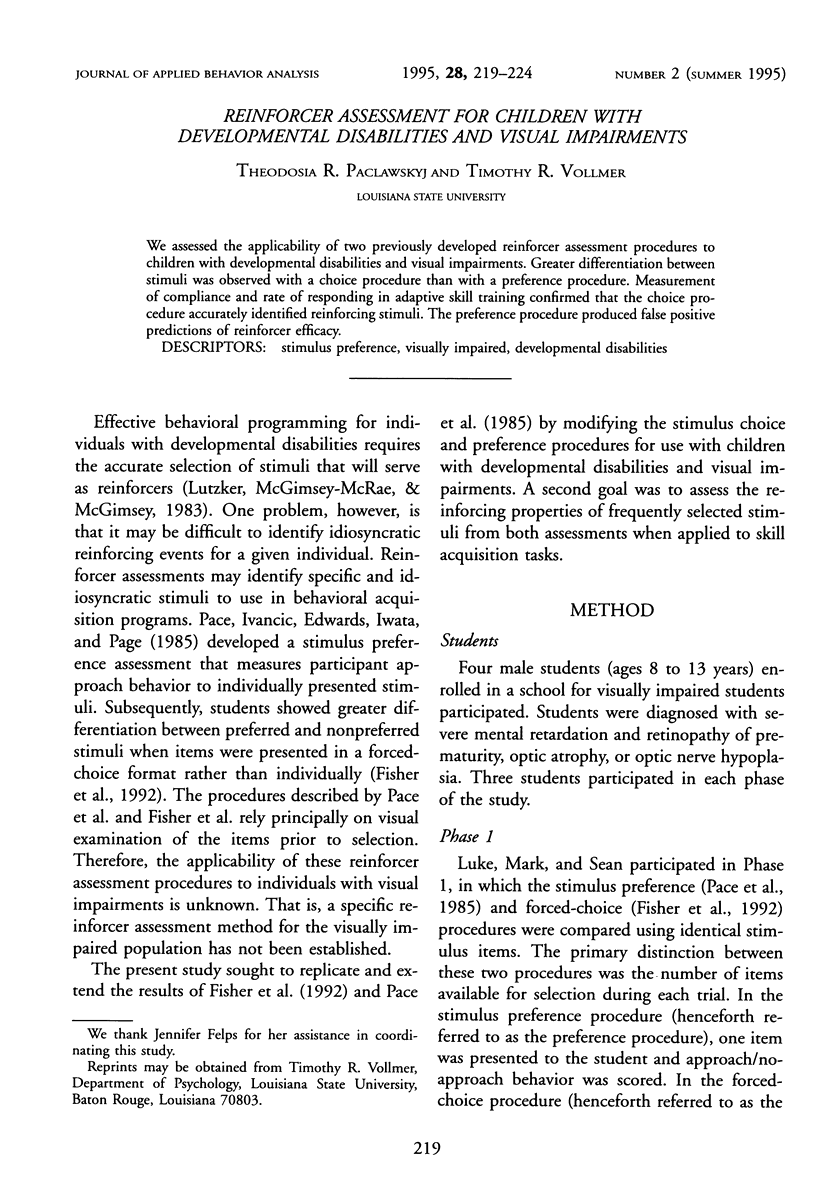
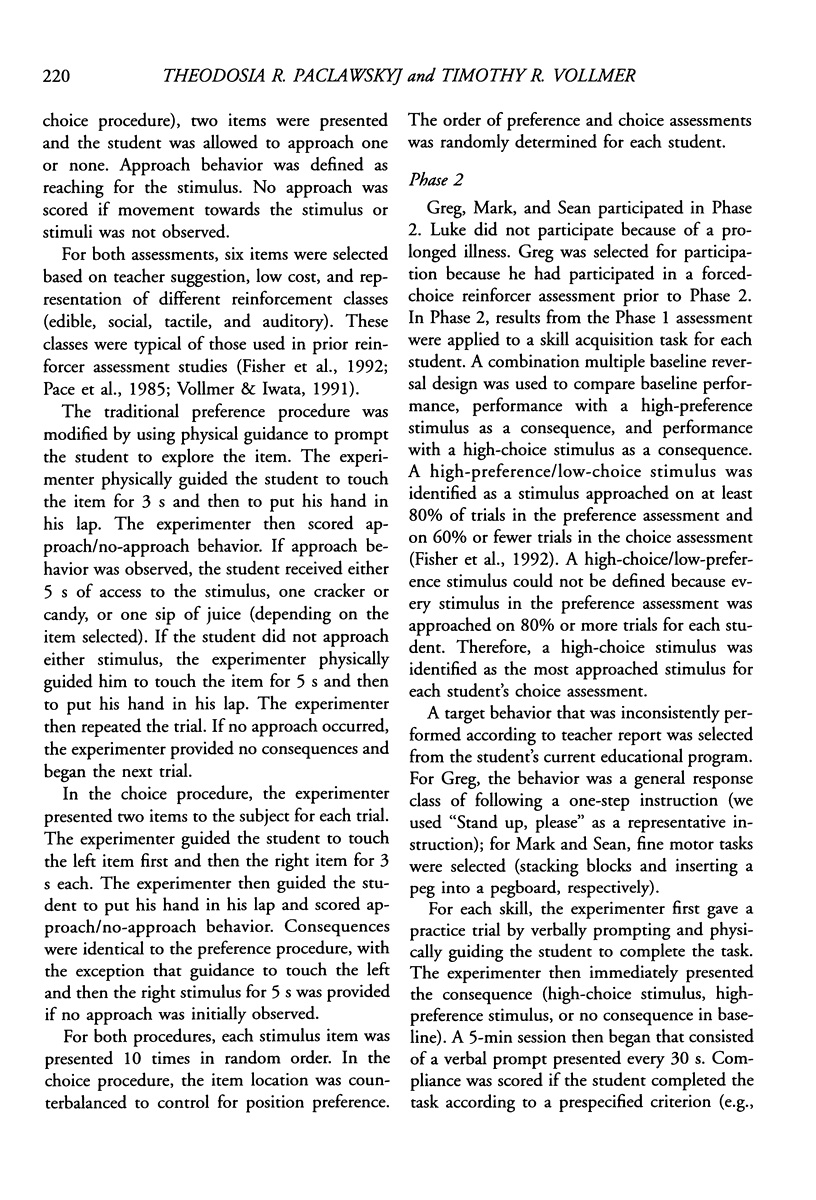
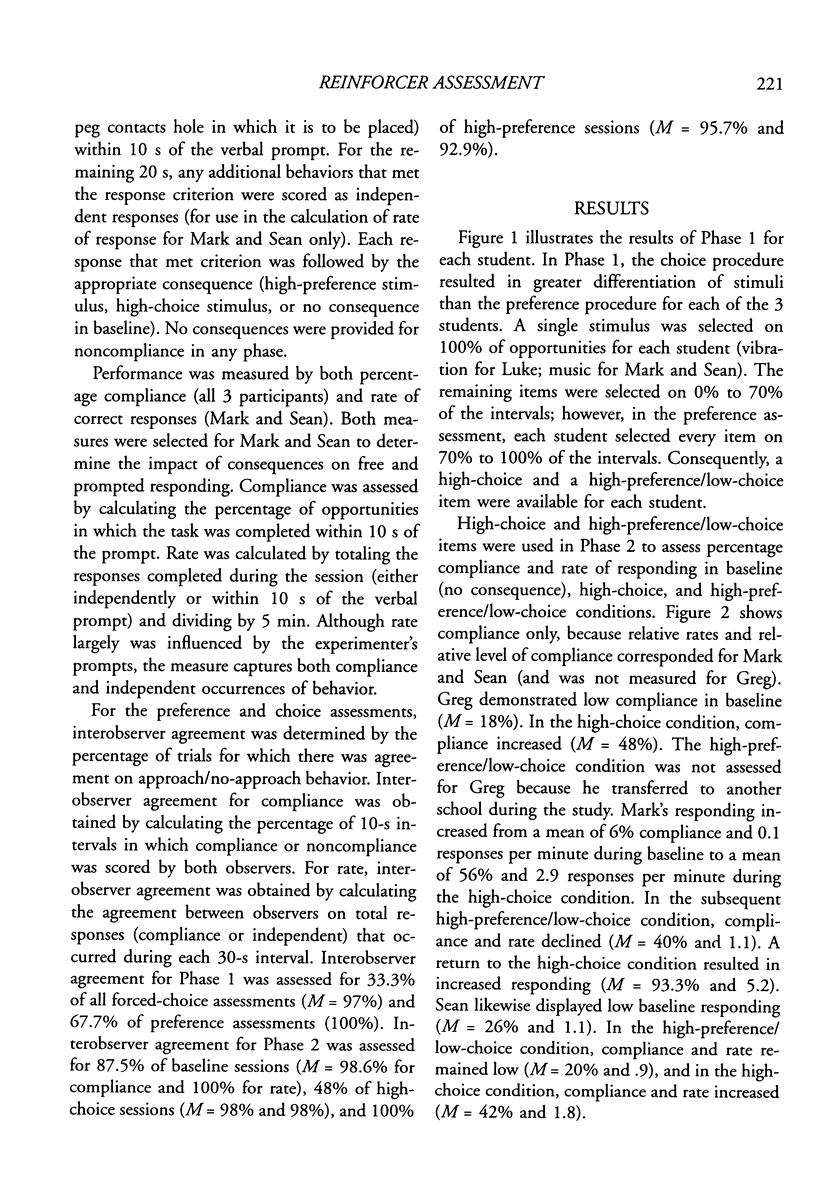
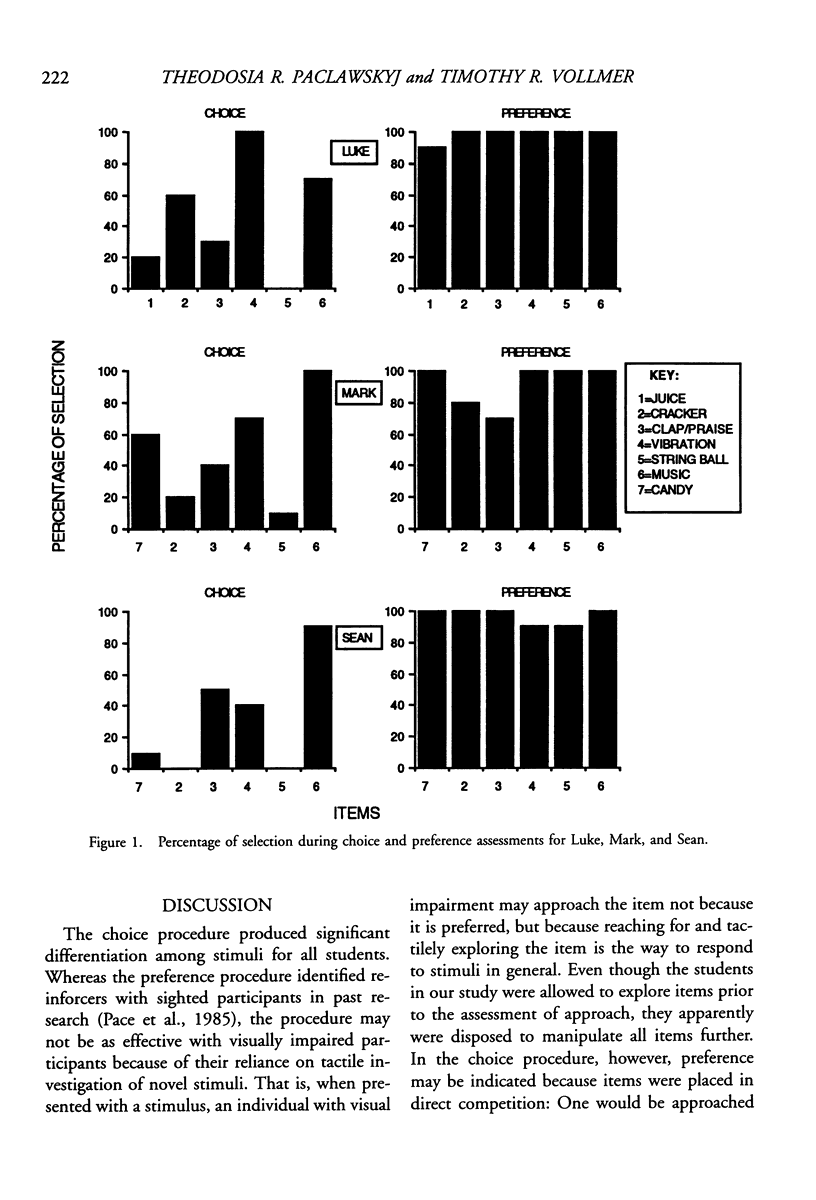
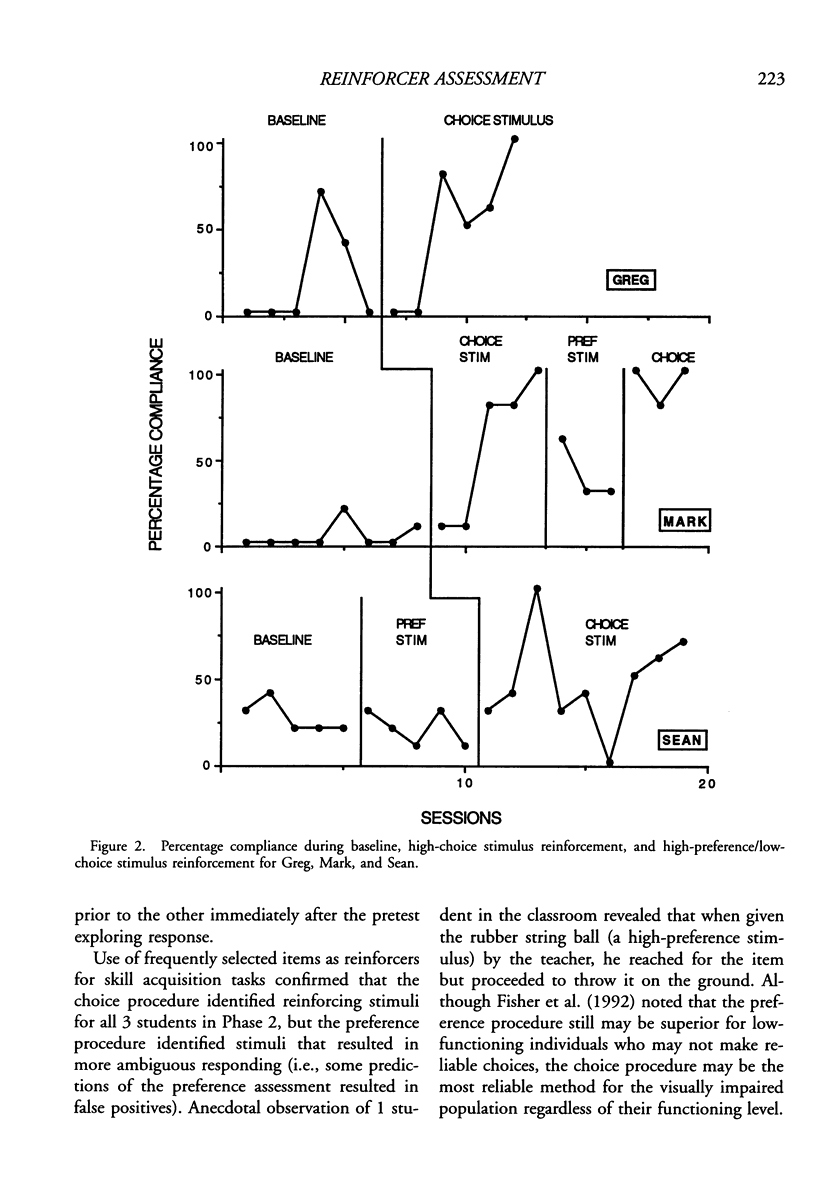
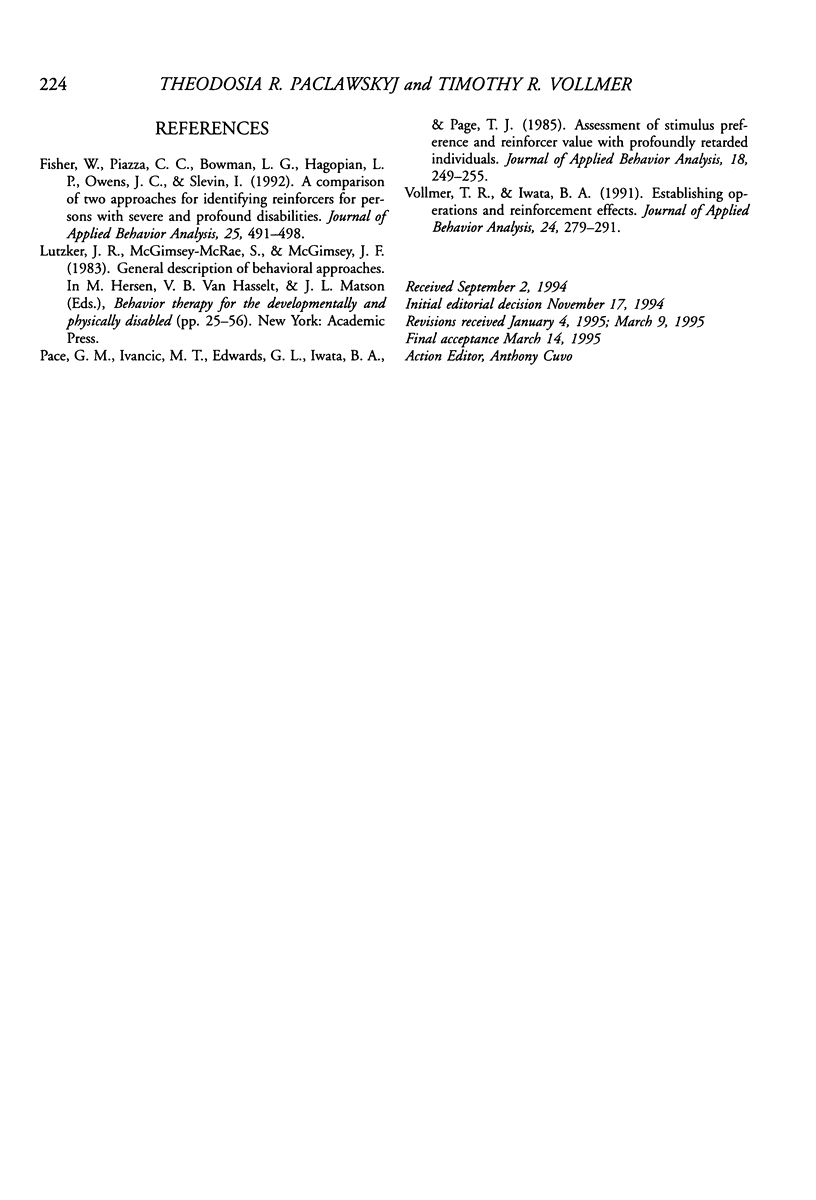
Selected References
These references are in PubMed. This may not be the complete list of references from this article.
- Fisher W., Piazza C. C., Bowman L. G., Hagopian L. P., Owens J. C., Slevin I. A comparison of two approaches for identifying reinforcers for persons with severe and profound disabilities. J Appl Behav Anal. 1992 Summer;25(2):491–498. doi: 10.1901/jaba.1992.25-491. [DOI] [PMC free article] [PubMed] [Google Scholar]
- Pace G. M., Ivancic M. T., Edwards G. L., Iwata B. A., Page T. J. Assessment of stimulus preference and reinforcer value with profoundly retarded individuals. J Appl Behav Anal. 1985 Fall;18(3):249–255. doi: 10.1901/jaba.1985.18-249. [DOI] [PMC free article] [PubMed] [Google Scholar]
- Vollmer T. R., Iwata B. A. Establishing operations and reinforcement effects. J Appl Behav Anal. 1991 Summer;24(2):279–291. doi: 10.1901/jaba.1991.24-279. [DOI] [PMC free article] [PubMed] [Google Scholar]


